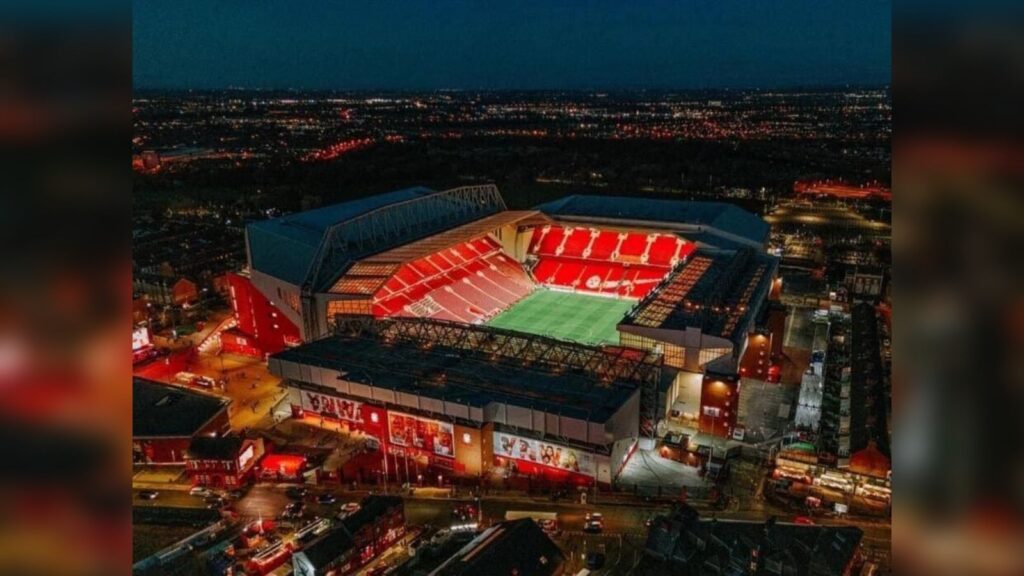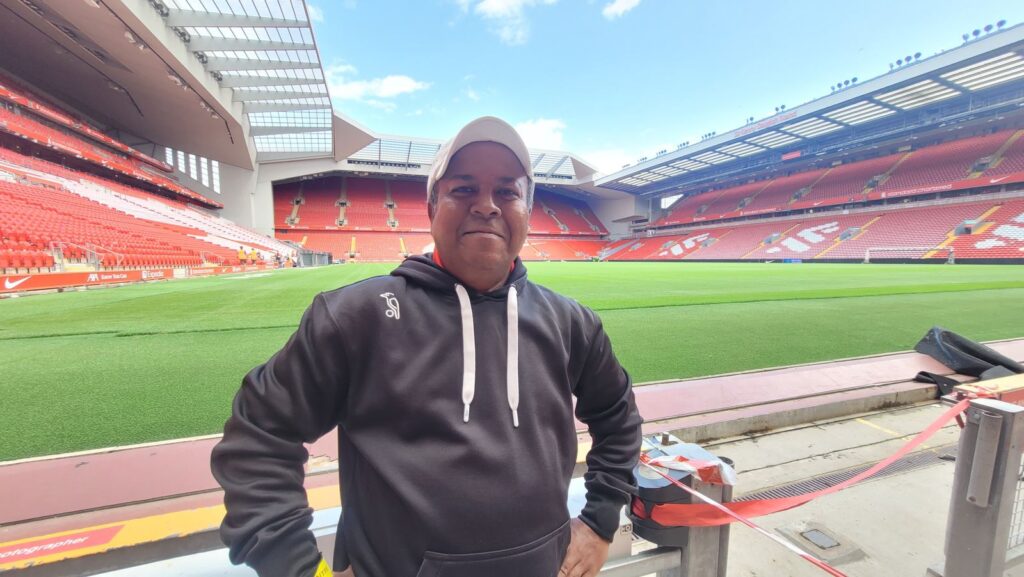
Debasis Sen from Liverpool
Visiting Anfield was one of the most memorable highlights of my trip to the United Kingdom this time. As a football fan, stepping into the iconic home of Liverpool FC had always been on my bucket list. That long-held dream finally came true on Friday, when I made the journey from Manchester to Liverpool.
The trip began with a 90-minute bus ride from Chorlton’s Manchester Coach Station. Upon arriving in Liverpool, I booked an Uber and was picked up by Mohi, a cheerful driver originally from Libya. As we chatted, I mentioned that I was a sports journalist visiting Anfield. His face lit up with excitement. “It will be a lifetime experience for you,” he said. And he couldn’t have been more right.
For the next two and a half hours, I was completely immersed in the rich legacy of one of England’s most storied football clubs. Walking through the players’ tunnel, stepping inside the home dressing room, and exploring the club museum filled with trophies and memorabilia—it was nothing short of surreal. The energy, the passion, and the history embedded in every brick and banner of Anfield was something that could only be felt, not explained.
But this visit held a deeper emotional purpose. I had come not only to admire the legendary stadium, but also to pay tribute to Diogo Jota—the gifted Portuguese forward whose life was tragically cut short in a car accident just two weeks earlier, at the age of 28.
Jota had been a key figure for Liverpool since his arrival from Wolverhampton Wanderers in September 2020. In his five seasons with the club, he made 182 appearances, netted 65 goals, and helped Liverpool lift several major trophies, including the Premier League title in the 2024–25 season, an FA Cup, and two EFL Cups. Known for his clinical finishing and ability to deliver in crucial moments, Jota was not just a goal-scorer—he was a game-changer.
Even 15 days after his untimely death, Anfield continued to receive mourners from across the globe. Fans, regardless of club allegiance, came to leave scarves, jerseys, and handwritten notes. The club’s decision to retire his No. 20 jersey was a powerful gesture, underscoring the lasting impact he had in such a short span.
As I walked through the Bob Paisley Gate, the Liverpool flag flying at half-mast caught my eye—a poignant symbol of a club and city in mourning. Near the entrance to the club museum stands the statue of legendary manager Bill Shankly, arms outstretched in his iconic pose, as if welcoming everyone home.
Before heading back, I spent a moment at the Hillsborough Memorial, located just outside the stadium. The eternal flame burns there continuously, in memory of the 97 supporters who tragically lost their lives in the Hillsborough disaster on 15 April 1989. That day, an FA Cup semi-final between Liverpool and Nottingham Forest turned into Britain’s deadliest sporting tragedy due to a catastrophic crowd crush in the Leppings Lane end.
The police’s decision to open Exit Gate C led to a surge of fans into already packed pens, causing fatal overcrowding. Among those lost was Jon-Paul Gilhooley, just 10 years old—the youngest victim and cousin of Liverpool legend Steven Gerrard.
Each name is etched into the memorial, a permanent reminder of the lives lost and the fight for justice that followed. Standing there in silence, I felt the full weight of Liverpool FC’s history—its triumphs, its tragedies, and its unwavering spirit.
As I boarded the bus back to Manchester, I carried with me a deep emotional connection to a club whose story transcends the pitch. Anfield is more than just a stadium—it’s a living monument of passion, resilience, and community.

Follow Revsportz for latest sports news



